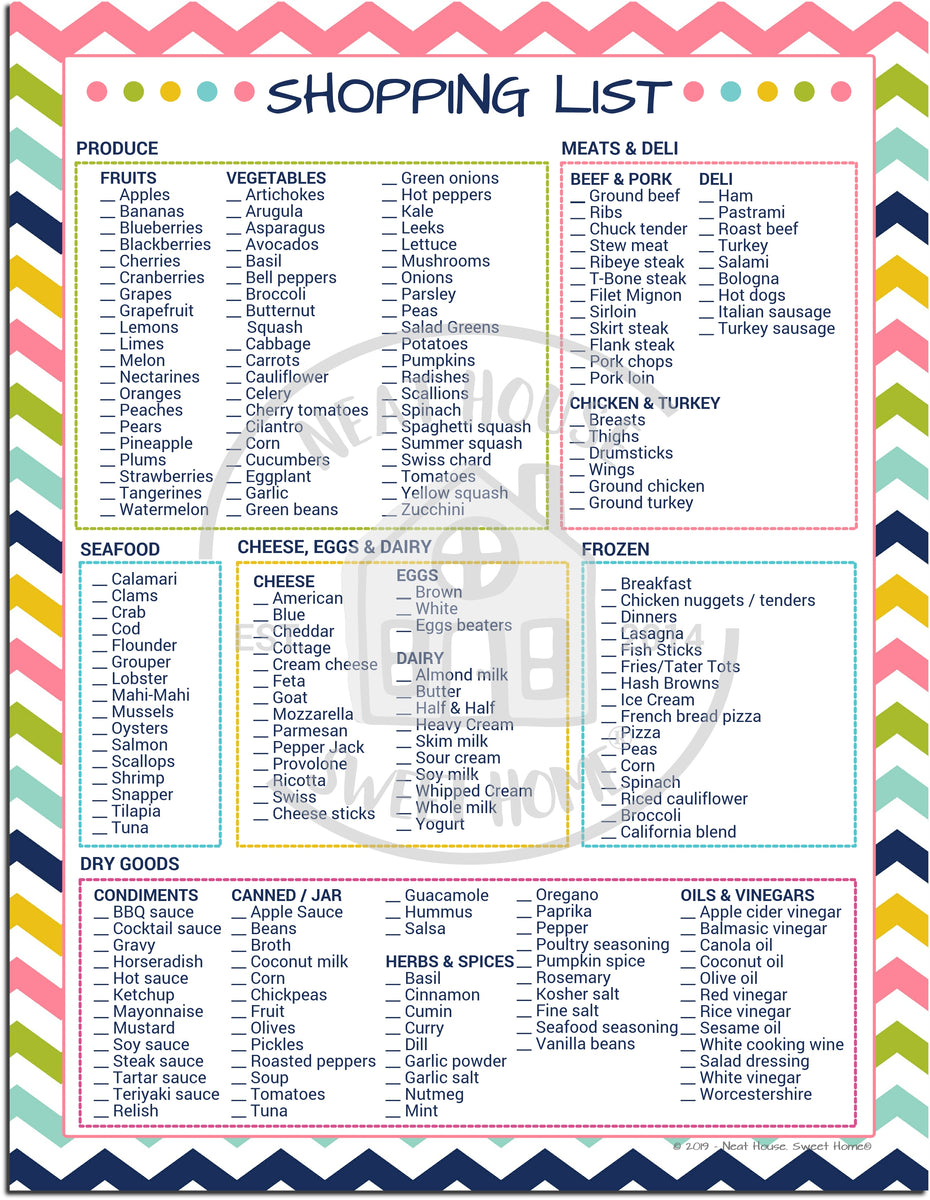
Whether you’re a seasoned grocery shopper or a newbie in the supermarket aisles, having a well-planned grocery shopping checklist is essential for a successful and stress-free shopping experience. A grocery shopping checklist not only helps you stay organized but also ensures that you don’t forget any important items while navigating through the aisles. In this comprehensive guide, we will walk you through the ins and outs of creating an effective grocery shopping checklist that meets your needs and makes your shopping trips a breeze.
Why Should You Use a Grocery Shopping Checklist?
Using a grocery shopping checklist has numerous benefits that can significantly improve your shopping experience. Here are some compelling reasons why you should start using a grocery shopping checklist:
- Save Time: With a well-planned checklist, you can avoid wandering in the aisles and wasting time trying to remember what you need.
- Save Money: A checklist helps you stick to your budget and avoid impulse buys, ultimately saving you money.
- Stay Organized: By categorizing items on your checklist, you can ensure that you don’t miss any essentials and easily locate them in the store.
- Eat Healthier: A checklist encourages you to plan your meals, allowing you to make healthier food choices and avoid unhealthy snacks.
- Reduce Food Waste: By only buying what you need, you can minimize food waste and contribute to a more sustainable lifestyle.
How to Create an Effective Grocery Shopping Checklist
Creating an effective grocery shopping checklist involves a few simple steps. Follow these guidelines to ensure that your checklist meets your specific needs:
1. Assess Your Needs and Priorities
Before creating your grocery shopping checklist, take some time to assess your needs and priorities. Consider your dietary preferences, any specific dietary restrictions or allergies, and the types of meals you plan to prepare. This will help you determine the essential items that should be on your checklist.
2. Categorize Your Checklist
Organizing your checklist into categories can make your shopping trip more efficient. Common categories include produce, dairy, meat and seafood, pantry staples, frozen foods, and household items. By categorizing your items, you can easily navigate through the store and locate the items you need.
3. Plan Your Meals
Meal planning is an essential part of creating a grocery shopping checklist. Take some time to plan your meals for the week, including breakfast, lunch, dinner, and snacks. This will help you determine the specific ingredients you need and ensure that you don’t forget anything.
4. Check Your Pantry and Fridge
Before heading to the store, check your pantry and fridge to see what items you already have on hand. This will help you avoid buying duplicates and ensure that you only purchase what you need. Cross off any items from your checklist that you already have.
5. Consider Seasonal and Sale Items
When creating your grocery shopping checklist, consider seasonal produce and any items that are on sale. Buying seasonal produce ensures that you get the freshest and most flavorful options while taking advantage of sale items can help you save money.
6. Don’t Forget Non-Food Items
While food items are the main focus of a grocery shopping checklist, don’t forget to include non-food items that you need, such as cleaning supplies, toiletries, and pet food. These items are often overlooked but are essential for your household.
7. Keep a Running List
To ensure that your grocery shopping checklist is always up to date, keep a running list in your kitchen or on your phone. Whenever you run out of a specific item or remember something you need, jot it down immediately. This will save you time when it comes to creating your next shopping list.
8. Customize Your Checklist
Every individual has unique needs and preferences when it comes to grocery shopping. Customize your checklist to suit your specific needs by adding or removing categories, including specific brand names, or incorporating any other personal preferences.
Sample Grocery Shopping Checklist
To give you an idea of what a comprehensive grocery shopping checklist looks like, here’s a sample checklist:
- Produce: apples, bananas, spinach, tomatoes, onions
- Dairy: milk, eggs, cheese, yogurt
- Meat and Seafood: chicken breasts, ground beef, salmon
- Pantry Staples: rice, pasta, canned beans, olive oil, spices
- Frozen Foods: frozen vegetables, ice cream
- Household Items: toilet paper, paper towels, laundry detergent
Remember, this is just a basic sample, and you should customize it according to your specific needs and preferences.
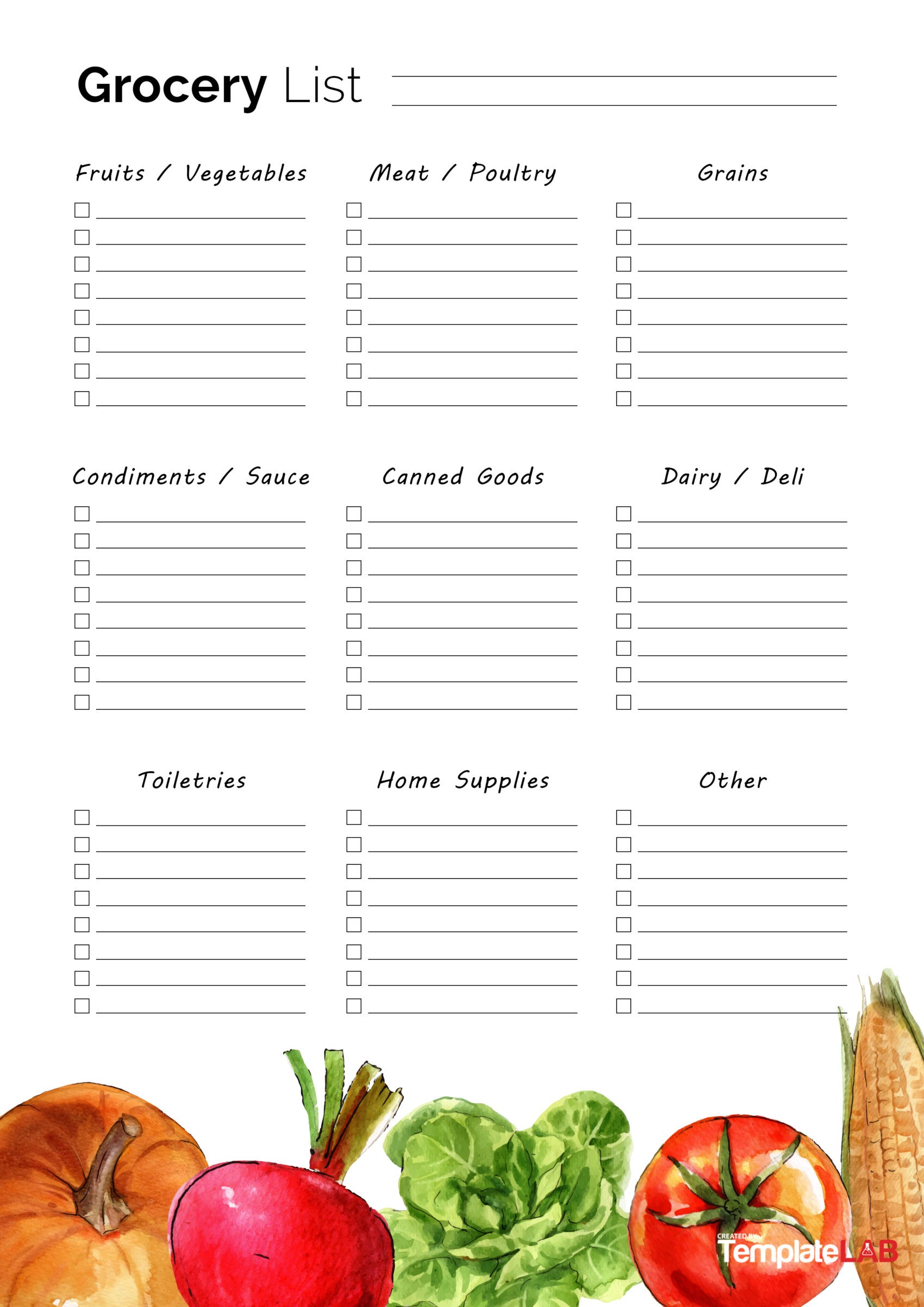
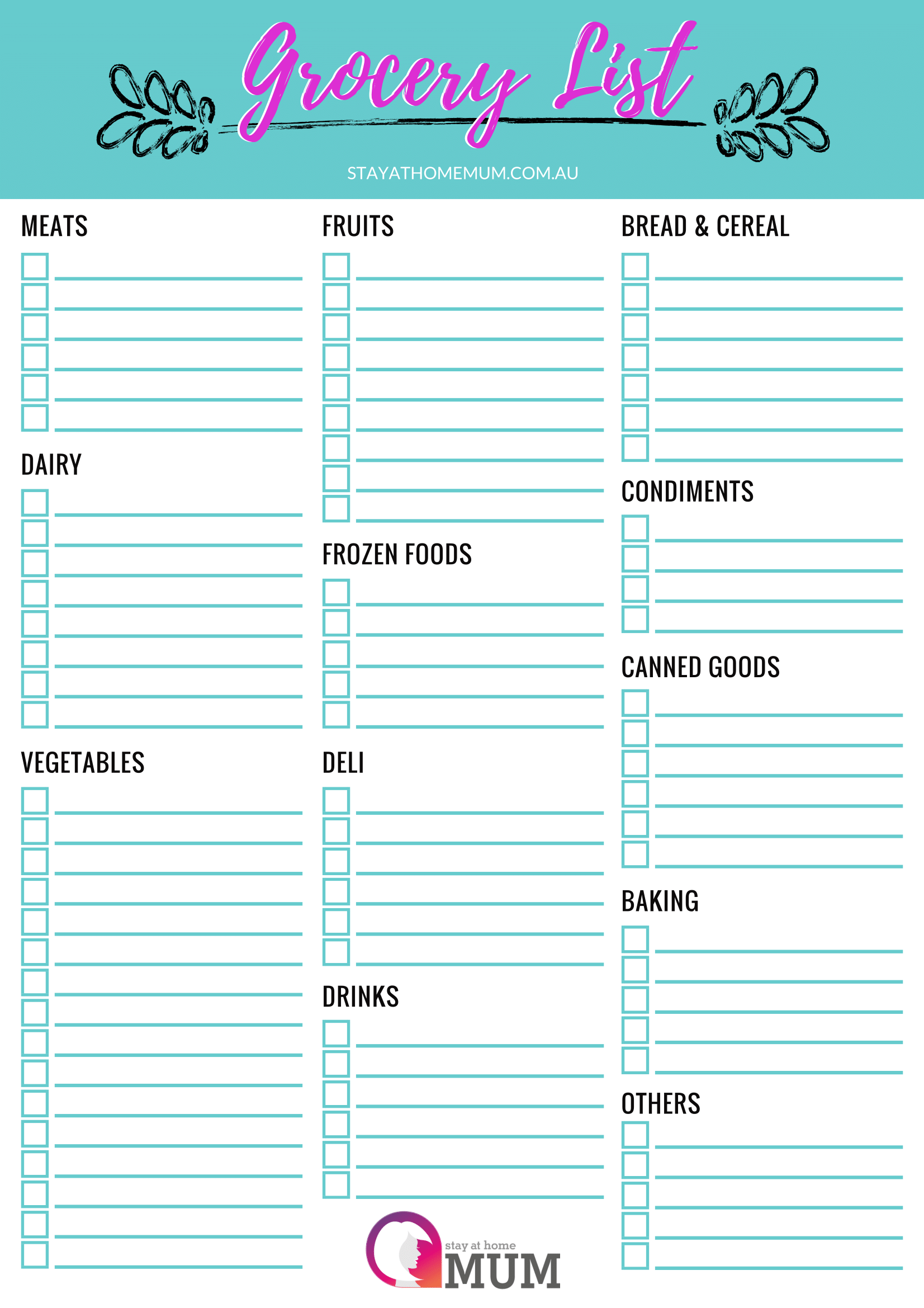
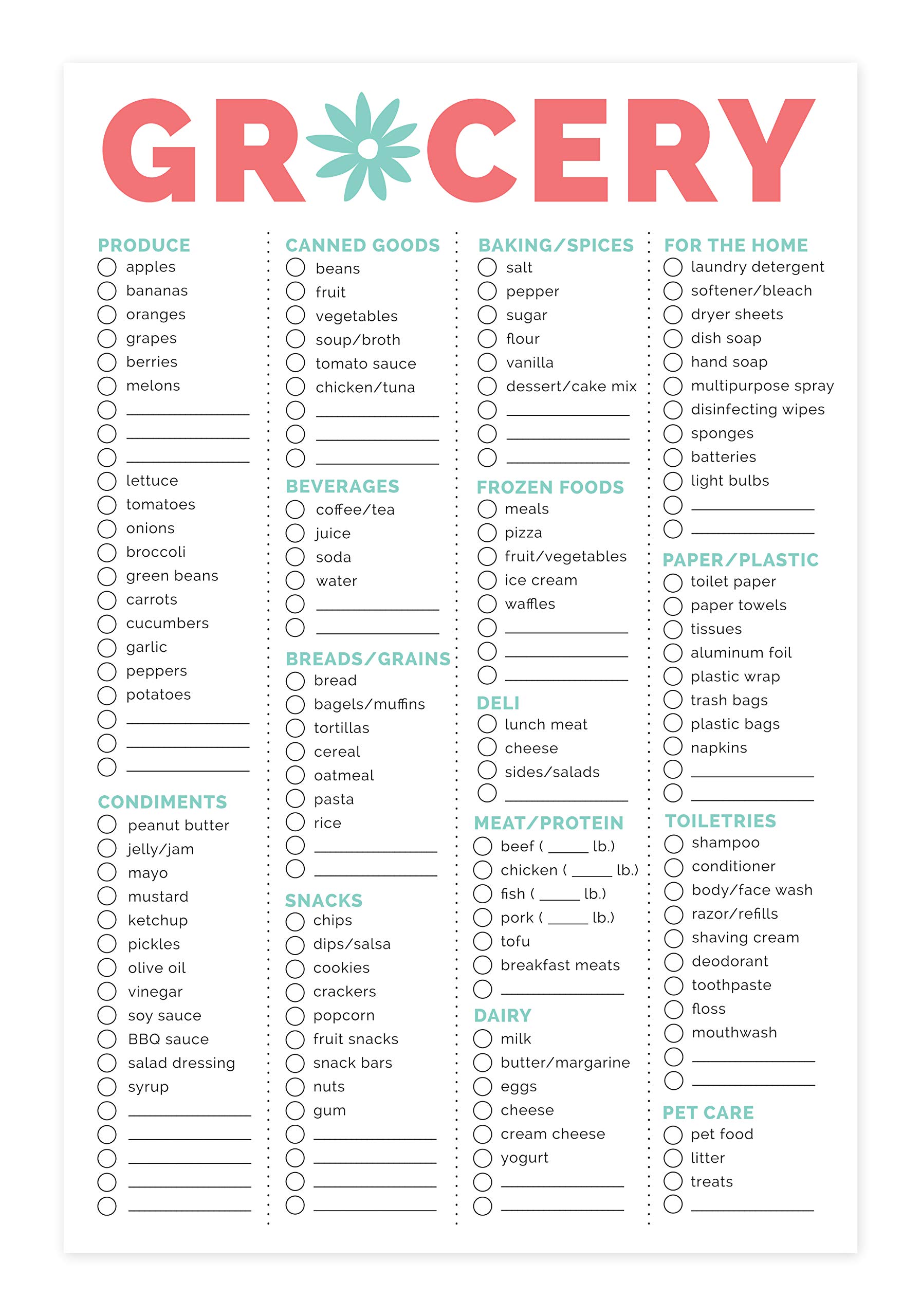
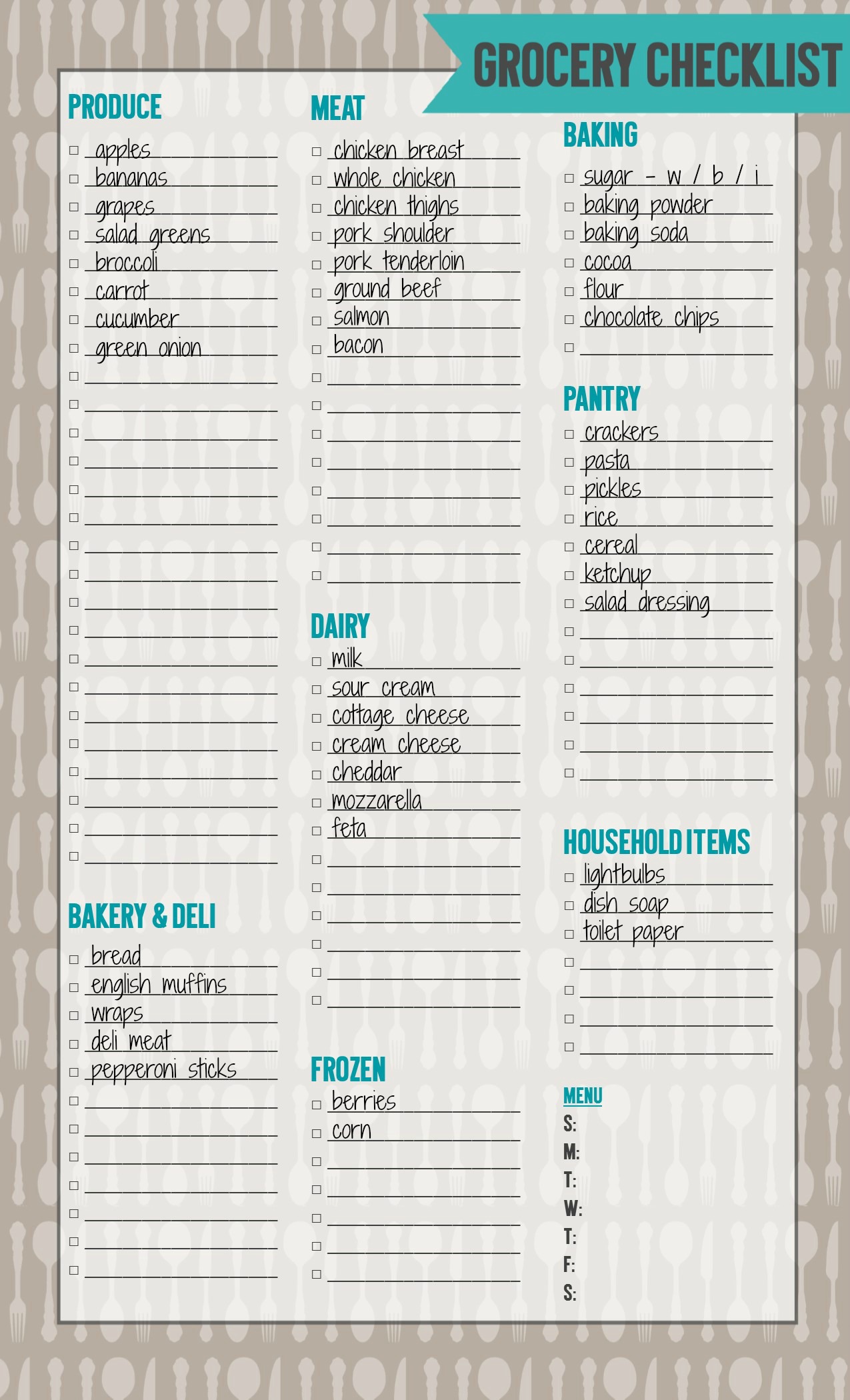
Top Tips for Successful Grocery Shopping
Now that you have your grocery shopping checklist ready, here are some additional tips to make your shopping trip even more successful:
- Shop When It’s Less Crowded: Try to schedule your shopping trips during off-peak hours to avoid long lines and crowded aisles.
- Stick to Your List: Resist the temptation to deviate from your list and only buy what you need.
- Check Expiration Dates: Before adding an item to your cart, check the expiration date to ensure its freshness.
- Compare Prices: Take the time to compare prices and consider buying generic or store-brand items to save money.
- Bring Reusable Bags: Help reduce plastic waste by bringing your reusable bags for groceries.
- Check for Discounts and Coupons: Look for discounts and coupons in-store or online to save money on your shopping.
- Review Your Receipt: Double-check your receipt before leaving the store to ensure that you were charged correctly.
- Meal Prep in Advance: Once you’ve completed your shopping trip, spend some time meal prepping to make your week ahead easier.
By following these tips and using your well-planned grocery shopping checklist, you can streamline your shopping experience and make it more enjoyable.
Grocery Shopping Checklist Template Word – Download